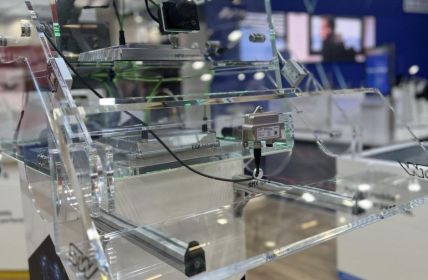The latest IoT Security Landscape Report from Bitdefender and Netgear shows that home networks are attacked an average of eight times a day. Most vulnerabilities are found in smart TVs, which account for more than half of all vulnerabilities. These worrying figures should encourage consumers to regularly check their IoT devices for vulnerabilities and take appropriate protective measures to secure their connected home devices.
Bitdefender and Netgear warn: Smart TVs vulnerable to cyber attacks
The idea of a monster crawling out of the TV may seem absurd, but the threat posed by smart TVs is real. According to the IoT Security Landscape Report by Bitdefender and Netgear, cyberattacks on these devices are becoming more common as hackers exploit the vulnerabilities of smart TVs to gain access to their victims’ networks and potentially cause damage.
The statistics show that more than half of all attacks on IoT devices target smart TVs. Smart sockets and routers follow in next place with 13 and 9 per cent respectively, while video recorders are surprisingly among the most attacked devices with 8 per cent. On average, 8 home networks are affected by cyberattacks every day.
Cybercriminals rely on various techniques to attack smart devices. The majority of these attacks, 84 per cent, are based on denial-of-service or DoS attacks, such as port scanning. This involves scanning the devices for vulnerabilities while they continue to function normally. Only 11 per cent of the attacks aim to steal confidential data.
Cybercriminals rely on various techniques to attack smart devices. The majority of these attacks, 84 per cent, are based on denial-of-service or DoS attacks, such as port scanning. This involves scanning the devices for vulnerabilities while they continue to function normally. Only 11 per cent of attacks aim to steal confidential data.Bitdefender found that DoS attacks have the worst impact on affected devices, as in 31 per cent of cases devices fail completely as a result of such an attack. Overflow attacks account for 29 per cent, followed by malicious code execution (12 per cent), memory corruption (10 per cent) and privilege escalation (7 per cent). It is important that companies and individuals are aware of how to protect themselves against these types of attacks to minimise potential damage.
Bitdefender experts note that smart home systems are threatened by known vulnerabilities such as Double Pulsar (CVE-2021-0143). In particular, the inadequate protection of IoT devices makes them vulnerable to attacks. In view of the growing number of networked devices and increasing hacker activity, the situation remains critical.
Bitdefender: Good measures to secure smart home systems
- By replacing old equipment with new, you can ensure that you keep up with the latest standards and may even enjoy additional features and benefits.
- Replacing old devices with new ones will ensure that you keep up with current standards and may even enjoy additional features and benefits.To ensure the highest level of security, smart hardware devices should operate on an isolated guest network that is separate from the main network.
- Don’t forget to patch your devices every time a new firmware version is released to ensure the security of your systems.
- Secure your network by using routers and gateways that have built-in security mechanisms. This will help ensure that your network is protected from unauthorised access and other security threats.
- Secure your network by using routers and gateways that have built-in security mechanisms. This will help protect your network from unauthorised access and other security threats.The Smart Home Scanner helps you minimise security risks on your home network by scanning for vulnerable devices.
- It is recommended that users only connect their LAN devices to the Internet when it is absolutely necessary for the devices to function, in order to avoid possible security breaches.














